How to distinguish feed corn from food corn and the uses of both types
In the 50-60s of the last century, corn in the USSR was called the queen of the fields. NS Khrushchev planned, by increasing the area of cereal crops, to feed the entire Soviet Union and overtake the United States in the production of milk and meat. Almost 60 years after the end of the "corn campaign", the Russian government once again recommended agricultural producers to pay attention to this crop.
The content of the article
How to distinguish feed corn from food corn
There is a hypothesis that corn is the oldest bread plant on Earth. This cereal is used for cooking, cobs and grain are fed to pets. Breeders have developed a large number of varieties for different purposes. They are all edible for humans, but food corn tastier and healthier.
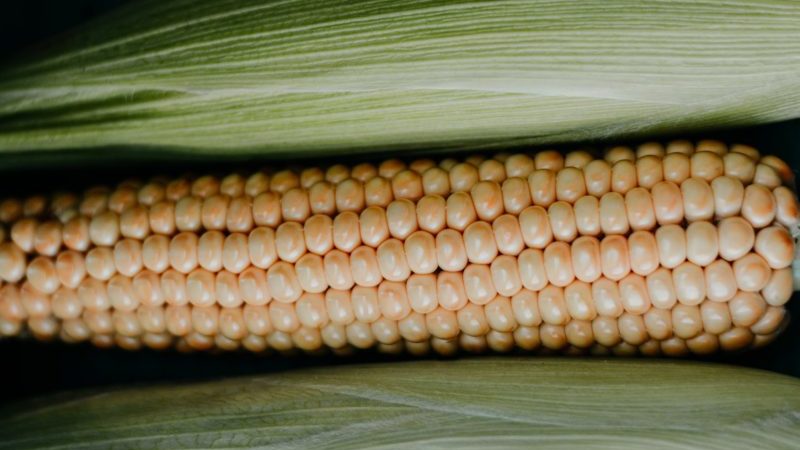
The difference in appearance
In order not to be mistaken when choosing and buying cobs on the market, we will consider the features of each type of cereal.
Fodder corn are inherent in:
- long ears;
- grains are bright yellow or orange.
Edible (sweet) corn is characterized by:
- thick cobs;
- large poured grains of milky or pale yellow color.
In the photo - food and fodder corn.
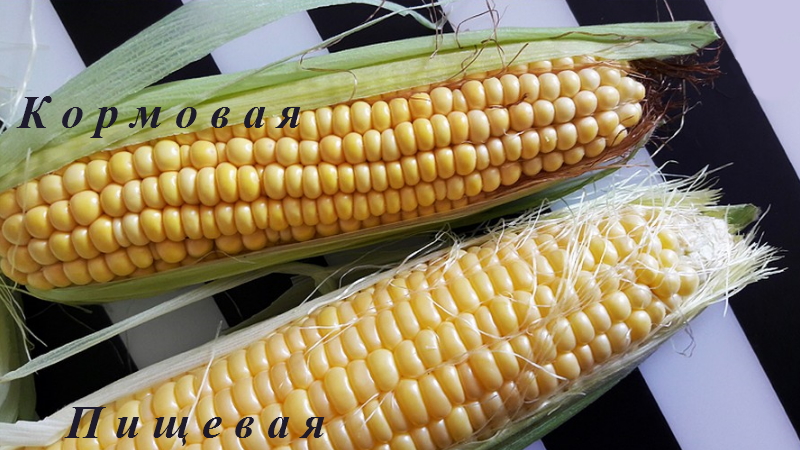
The difference in taste
In the forage crop, the grains are denser and not sweet. In cooking, they are used mainly for side dishes, soups, popcorn. When cooked, they acquire a fresh, neutral taste, characteristic of many cereals. Boiled corn bright yellow color and rich aroma.
Advice!You can taste the grains. In a sugar crop, at the same degree of maturity, they will be more watery, softer and sweeter.
For appetizers and salads edible corn is more suitable. It is much sweeter, softer and juicier than the fodder.
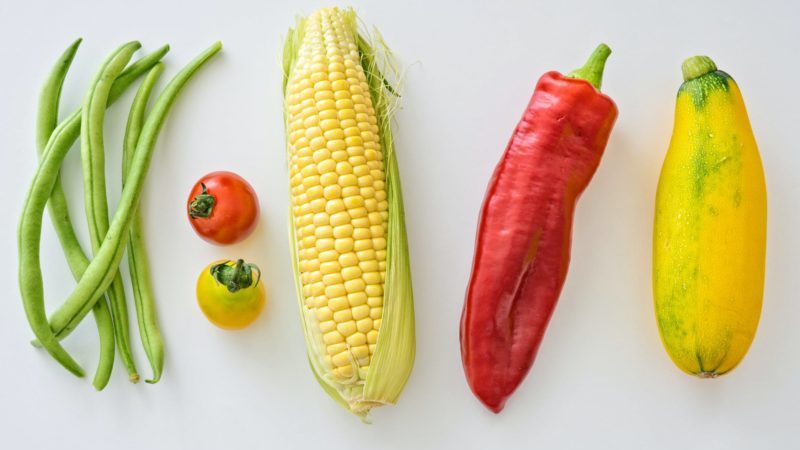
Life hacks to distinguish types
To identify the type of corn, lightly press down on the grain with your fingernail. The peel of the sugar will burst and the juice will flow. The feed grain will be crushed, but there will be no juice.
Simple measurements will help to determine the type of cereal. The length of the ears of sweet corn is about 15 cm, the length of the fodder is about 25 cm.
The difference in chemical composition, properties, applications
The grains of any corn are very useful: they contain vitamins E, A, PP, C, group B. Nutritional value of sugar cereal - 180 kcal per 100 g, feed - 220 kcal. There are much more mono- and disaccharides in food. The vegetable is rich in boron, silicon, manganese, phosphorus, selenium, magnesium, copper and iron.
Sugar is used exclusively for human food, while feed has a wider range of uses: medicine, industry, energy.
Reference. Corn silk is used in medicine for diseases of the liver, gallbladder, urinary tract.
A significant part of fodder corn is used in the diet of the population of the developing countries of Africa.
Application of fodder corn

The purpose of the fodder crop is the use of food by both humans and animals, the manufacture of medicines... However, the main application is high-calorie pet food. About 2/3 of the cultivated crop is used to feed livestock and poultry. Mostly plants are harvested after full grain ripening.
For which animals and how to apply
Pets that include corn in their feed:
- horses;
- cows and other cattle;
- small ruminants (goats, sheep);
- pigs;
- birds (chickens, ducks, geese, turkeys).
Corn provides energy for cattle and pigs. Compared to other grain feeds, most of the nutritional value of the cereal is used, since starchy grains pass through the animal's food tract for a long time.
In birds, cereal is the main type of food. It supplies xanthophylls, which improve the color of the egg yolk, making it bright and rich. The eggs become larger due to linoleic acid.
Types of corn feed:
- ground cobs;
- whole grains;
- crushed;
- extruded;
- air;
- micronized;
- high-moisture;
- flakes.
In Russia, fodder crops are more often used in the form of crushed ears and crushed grain, including as part of compound feed. Adding to food begins with the stage of milky-wax maturity of the cereal.
Eating corn, livestock and poultry quickly fatten up. Therefore, a moderate amount of such feed is recommended for breeding animals.
Application of food corn
Sugar plant varieties are not subject to long-term storage, they are grown for culinary use and processed quickly.
How to cook properly
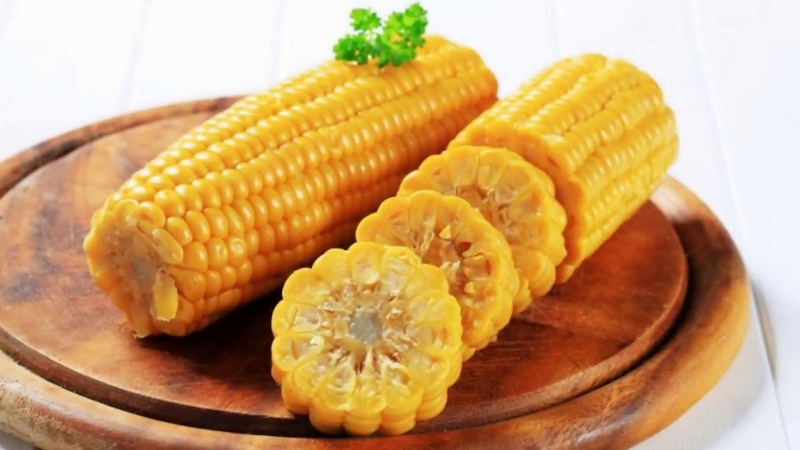
Boiled corn is a famous snack. In order for an ear of this cereal to be tasty and retain its beneficial properties, it is important to cook it correctly.
The cobs are cleaned of damaged and dirty leaves, leaving only a few thin ones. Only the dark upper parts are removed from the stigmas. Keeping a certain amount of leaves and hairs during cooking allows you to get more aromatic and tasty grains.
Important! For even cooking, use cobs of the same size. Large ones are cut into 2 parts.
The cooking time of the cereal depends on its ripeness. Young corn is cooked like this:
- Take a thick-walled saucepan, pour in filtered water.
- Add granulated sugar (1 tsp for 1 liter of water), bring the solution to a boil.
- Lay the cobs, bring to a boil again.
- Reduce heat, cover the pan.
- Cook for 15-20 minutes.
- After finishing cooking and cooling the corn, remove the remaining leaves and stigmas.
Another way: pre-completely clean the cobs and boil them in a saucepan, the bottom and sides of which are lined with leaves.
When boiling, the ears must be completely submerged. Flip vegetables periodically, otherwise they will not cook evenly.
Reference. The Bonduelle variety is mainly used for baby food. Its cooking time is the same as for young cereals.
Ripe edible corn has bright yellow grains, harder and more saturated in consistency. They are cooked for about 30 minutes. To get loose and soft seeds, the ears are boiled for 40–45 minutes. It takes 3-4 hours to prepare a feed cereal.
It is not recommended to salt the cereal during cooking: salt promotes the release of liquid from the grains, so they become tough and less juicy.
Only after complete cooking is the ear sprinkled or rubbed with salt. You can grease the corn with butter or dip it in melted corn. A hot vegetable, greased with a slice of lemon and sprinkled with salt, is also tasty.
Other cooking methods
There are many traditional and unusual recipes for making beans. In Russia, cereal is most often used in various salads, snacks and snacks.... Cornbread, tortillas, and porridge are popular.
It's easy to make your own popcorn in the microwave, oven and even on the stovetop. For this purpose, feed corn or special varieties for the preparation of puffed grains are used.
The easiest popcorn recipe is to put the beans in a preheated pan, cover and microwave for about 4 minutes. Remove when the corn stops popping. Add butter and vegetable oil, salt and other ingredients to taste.

Grilled corn cobs are popular in America. The simplest side dish is cereal baked right in the leaves.
Good additions:
- butter with herbs;
- it is with garlic and spices;
- mayonnaise with chili powder and garlic.
One of the street food dishes in India is charcoal-fried cobs flavored with lime juice, salt and cayenne pepper.
Delicious and healthy salads are made from corn, lightly boiled and cooled with cold water. Fresh grains are also used in salads, mixed with onions, herbs, various vegetables and legumes.
A tender casserole with bell peppers and hot peppers is prepared from fresh sweet seeds. There's even a pumpkin cereal pudding recipe.
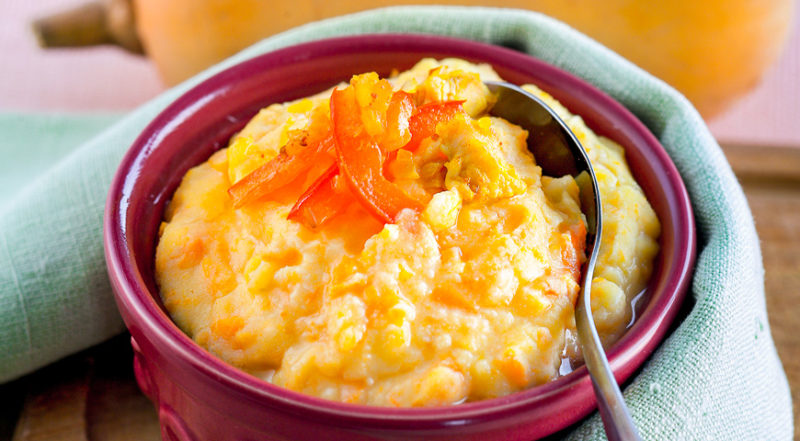
What is feed corn
Nutritionally valuable crops are grown not only for grain production. Feed corn is a strong and tall plant that surpasses human growth. The height reaches 3 m, in rare cases - 6-7 m. The green mass of this cereal is used as a vitamin feed for livestock and birds.
Feed corn varieties produce many leaves due to lateral shoots. Such plants are harvested before the seeds ripen, crushed and sent to feed cows, pigs and birds. The crushed mixture is preserved and silage is obtained, which is stored in specially equipped places.
Unlike other types of corn, forage is used only for the sake of green mass. Her grains are less tasty and juicy, they are more firm and unsweetened.

Conclusion
Corn is used in folk and official medicine, it is used in industry for the production of starch, ethanol and biogas replacing conventional fuels. As in any business, it is important to organize crop cultivation and make the most of its beneficial qualities.